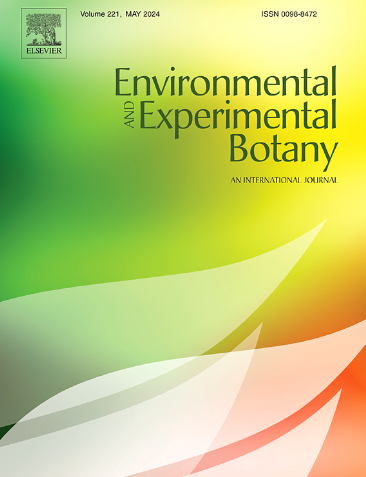High air temperature reduces plant specialized metabolite yield in medical cannabis, and has genotype-specific effects on inflorescence dry matter production
IF 4.7
2区 生物学
Q2 ENVIRONMENTAL SCIENCES
引用次数: 0
Abstract
Improving and standardizing the production of medical cannabis is essential for developing consistent and uniform medical products. Key challenges are achieving high concentrations of plant specialized metabolites (PSMs), uniformity of PSMs at different positions in the canopy, and high inflorescence dry matter production, while minimizing energy inputs for heating, ventilation, cooling, and electrical lighting. This study evaluated the effects of air temperature and photosynthetic photon flux density (PPFD) on PSM and dry matter production, and photosynthetic efficiency in medical cannabis (Cannabis sativa), 'Original Blitz' and 'Harmony CBD'. Plants were grown in climate-controlled chambers at three PPFD (600, 900, 1200 μmol m⁻² s⁻¹) during the short-day (generative) phase. The experiment spanned four cultivation cycles, with two at a lower temperature (day/night 25/21 °C) and two at a higher temperature (31/27 °C) during the short-day phase. Higher air temperature reduced total cannabinoid concentrations, but had no effects on terpenoids, while enhancing PSM uniformity between upper and lower inflorescences. Further, higher air temperature either decreased inflorescence dry matter production (in 'Harmony CBD') or had no effect (in 'Original Blitz'), thus influencing total cannabinoid yield. Increasing PPFD resulted in a linear rise in inflorescence dry matter production without affecting PSM composition, increasing overall cannabinoid yield. Toward the end of the short-day phase, leaf photosynthesis declined, likely due to leaf senescence. High temperatures caused abnormal inflorescence clusters to develop on top of older inflorescences, disrupting typical maturation and leading to lower cannabinoid levels.
高温降低了医用大麻中植物专门代谢物的产量,并对花序干物质生产具有基因型特异性影响
改善医用大麻的生产并使其标准化,对于开发一致和统一的医疗产品至关重要。关键的挑战是实现高浓度的植物专门代谢物(psm),在冠层不同位置的psm的均匀性,以及高的花序干物质生产,同时最大限度地减少加热,通风,冷却和电气照明的能量输入。本研究评估了空气温度和光合光子通量密度(PPFD)对医用大麻(cannabis sativa)、“Original Blitz”和“Harmony CBD”的PSM、干物质生产和光合效率的影响。植物在3个PPFD (600,900,1200 μmol m⁻²s)的气候控制室内生长,在短时间(繁殖)阶段。实验分为四个培养周期,其中两个在较低温度下(白天/晚上25/21 °C),两个在较短的白天阶段在较高温度下(31/27 °C)。较高的气温降低了总大麻素浓度,但对萜类没有影响,同时提高了上下花序间PSM的均匀性。此外,较高的气温要么降低了花序干物质产量(在‘Harmony CBD’中),要么没有影响(在‘Original Blitz’中),从而影响了总大麻素产量。增加PPFD导致花序干物质产量线性上升,而不影响PSM成分,增加大麻素总产量。在短昼期结束时,叶片光合作用下降,可能是由于叶片衰老。高温导致异常的花序簇在老的花序上发育,破坏了典型的成熟,导致大麻素水平降低。
本文章由计算机程序翻译,如有差异,请以英文原文为准。
求助全文
约1分钟内获得全文
求助全文
来源期刊

Environmental and Experimental Botany
环境科学-环境科学
CiteScore
9.30
自引率
5.30%
发文量
342
审稿时长
26 days
期刊介绍:
Environmental and Experimental Botany (EEB) publishes research papers on the physical, chemical, biological, molecular mechanisms and processes involved in the responses of plants to their environment.
In addition to research papers, the journal includes review articles. Submission is in agreement with the Editors-in-Chief.
The Journal also publishes special issues which are built by invited guest editors and are related to the main themes of EEB.
The areas covered by the Journal include:
(1) Responses of plants to heavy metals and pollutants
(2) Plant/water interactions (salinity, drought, flooding)
(3) Responses of plants to radiations ranging from UV-B to infrared
(4) Plant/atmosphere relations (ozone, CO2 , temperature)
(5) Global change impacts on plant ecophysiology
(6) Biotic interactions involving environmental factors.
 求助内容:
求助内容: 应助结果提醒方式:
应助结果提醒方式:


